Medicare Meltdown
Other Books by Rosemary Gibson and Janardan Prasad Singh
Wall of Silence
The Treatment Trap
The Battle Over Health Care
Medicare Meltdown
How Wall Street and Washington Are Ruining Medicare and How to Fix It
Rosemary Gibson and Janardan Prasad Singh
ROWMAN & LITTLEFIELD PUBLISHERS, INC.
Lanham Boulder New York Toronto Plymouth, UK
Published by Rowman & Littlefield Publishers, Inc.
A wholly owned subsidiary of The Rowman & Littlefield Publishing Group, Inc.
4501 Forbes Boulevard, Suite 200, Lanham, Maryland 20706
www.rowman.com
10 Thornbury Road, Plymouth PL6 7PP, United Kingdom
Copyright 2013 by Rowman & Littlefield Publishers, Inc.
All rights reserved. No part of this book may be reproduced in any form or by any electronic or mechanical means, including information storage and retrieval systems, without written permission from the publisher, except by a reviewer who may quote passages in a review.
British Library Cataloguing in Publication Information Available
Library of Congress Cataloging-in-Publication Data
Gibson, Rosemary, 1956
Medicare meltdown : how Wall Street and Washington are ruining Medicare and how to fix it / Rosemary Gibson and Janardan Prasad Singh.
pages cm
Includes bibliographical references and index.
ISBN 978-1-4422-1979-3 (cloth : alk. paper) ISBN 978-1-4422-1980-9 (electronic)
1. MedicareFinance. 2. MedicareForecasting. 3. Health care reformUnited States. I. Singh, Janardan Prasad, 1960 II. Title.
RA412.3.G53 2013
362.1068'1dc23 2012042960
 The paper used in this publication meets the minimum requirements of American National Standard for Information SciencesPermanence of Paper for Printed Library Materials, ANSI/NISO Z39.48-1992.
The paper used in this publication meets the minimum requirements of American National Standard for Information SciencesPermanence of Paper for Printed Library Materials, ANSI/NISO Z39.48-1992.
Printed in the United States of America
To the one who inspires every moment every day.
Acknowledgments
T his book would not have been possible without our many friends and colleagues in American medicine and nursing who have helped us understand the changes taking place on the front lines of twenty-first-century health care. They have shown us where the ground is shifting beneath our feet.
We are especially grateful for the wisdom of friends in the Consumers Union Safe Patient Project who have shared their individual and collective wisdom as patients and advocates for improvement in the quality and safety of the nations health care. They have peeled back the veneer and traced the impact of the business of American medicine on the decisions made, the products used, how long a doctor or nurse spends with a patient, and most assuredly, the cost of it all. We weave together the wisdom of many to reveal a big picture that is right in front of us, invisible, yet ever so powerful in shaping Medicares future and health care for us all.
We are indebted to those who blew the whistle to tell the inside story about the influence of Wall Street on Medicare policy making in Washington. What they know and shared with us is never written in any Washington health-policy newsletters or textbooks. They are courageous people, quintessential public servants who challenged the status quo when it was incompatible with the interests of seniors and other Americans. They bear the scars of being truth tellers in a world where the powerbrokers spare no effort to quash the truth and the people who tell it.
Our purpose is to give voice to those who have no voice, who lie awake at night worried about being sick, wondering what to do. Our aim is public policy that serves the public interest, not any special interest.
If this book accomplishes nothing else, we hope that it reveals a different path to protect and sustain a program that is a veritable lifeline for millions of people. The path we point to is not the easiest way forward and perhaps the hardest. But it is the right way.
We are deeply indebted to Dr. Larry Jassie for his unerring enthusiasm and for reading multiple drafts. Sarveshwari Singh and Shriansh Singh provided invaluable research assistance on fast-changing events surrounding Medicare.
We have no words to express our heartfelt appreciation to Suzanne Staszak-Silva at Rowman & Littlefield, who understood the importance and timeliness of the book and what it means for seniors, boomers, and the countrys future. We are truly honored and delighted to work with her to bring it to fruition.
Introduction
W e write this introduction in the first year of President Barack Obamas second term in the White House, as the clock ticks on the automatic spending cuts and tax increases, otherwise known as the fiscal cliff. Once again, Washington is a battleground over how to get the nations fiscal house in order.
Looming in the background is Medicare, the cherished program that protects Americans from the infirmities of old age and the financial ravages of American-style health care. The prospect of increasing the Medicare eligibility age from sixty-five to sixty-seven raises its unwelcome head. Meanwhile, optimal policy proposals to remove the waste that litters the program are buried deep in Washingtons political backyard.
We bring out of the shadows options to protect Medicare that would have overwhelming public support. You, the reader, have a right to know there are ways to protect Medicare without shifting an overwhelming burden to the public.
This book brings a new vantage point to the debate over how to protect Medicare for todays seniors, boomers, Gen X, Gen Y, and beyond. It shines a light on the rarely seen side of the programthe business of Medicare.
Most people think of Medicare as an entitlement for older Americans. Medicare is also big business. Hospitals, drug companies, device manufacturers, and other enterprises rely on Medicare for nearly six hundred billion dollars in annual revenue, which is the amount that the program spends in a year.
Today, fifteen health care companies are on the Fortune 100 list. When Medicare was enacted in 1965, there were none. A new health care industry was inaugurated when President Lyndon Johnson signed Medicare into law. It grew with vigor and stamped its own expansive footprint on the nations economy and politics.
The health care enterprise has brought life-saving products and services to Americans. But the metamorphosis of Medicare into a program whose biggest clients include corporate giants has turned the storied program on its head. They have an outsized impact on the care that seniors, boomers, and all Americans receive, and they are a powerful force shaping the future of the program.
In part I, we introduce Medicare with fifteen surprising facts about this popular federal program. It explains where the money comes from to pay for Medicare, who pays, and how much. A clear message is that many boomers need to be prepared to pay a substantialand growingshare of their future income for health care. As Democrats and Republicans spar over Medicares future, we compare and contrast their ideas to sustain Medicare and what they mean for seniors pocketbooks. More fiction than fact swirled during the 2012 presidential campaign, and we sort the facts from the fiction.
In part II, we go behind the scenes to show where the nearly six hundred billion dollars that Medicare spends in a year actually goes, who gets it, and how they are looking to get more of it. It begins with the real-life story of a Kentucky man who received a bill for one night in the hospital that cost as much as a house in his community. We explain the forces driving up the cost of a hospital bill. The story is emblematic of Medicares biggest challenge. We crack open the myth that health care in America costs so much because it is the best in the world. Lay readers and savvy policy makers will learn something new about Medicare and where it is headed.

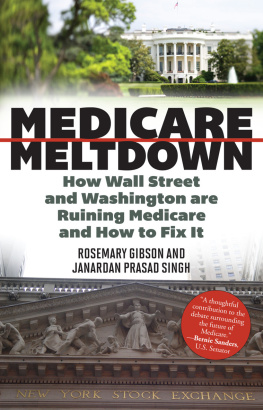

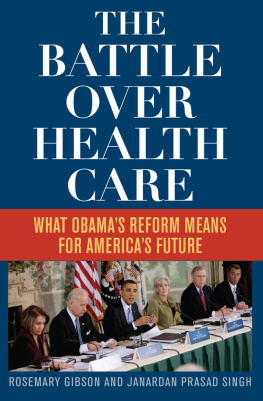




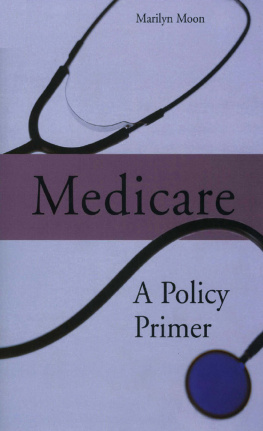
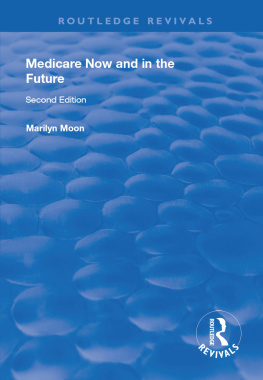
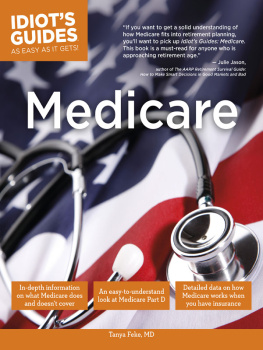


 The paper used in this publication meets the minimum requirements of American National Standard for Information SciencesPermanence of Paper for Printed Library Materials, ANSI/NISO Z39.48-1992.
The paper used in this publication meets the minimum requirements of American National Standard for Information SciencesPermanence of Paper for Printed Library Materials, ANSI/NISO Z39.48-1992.